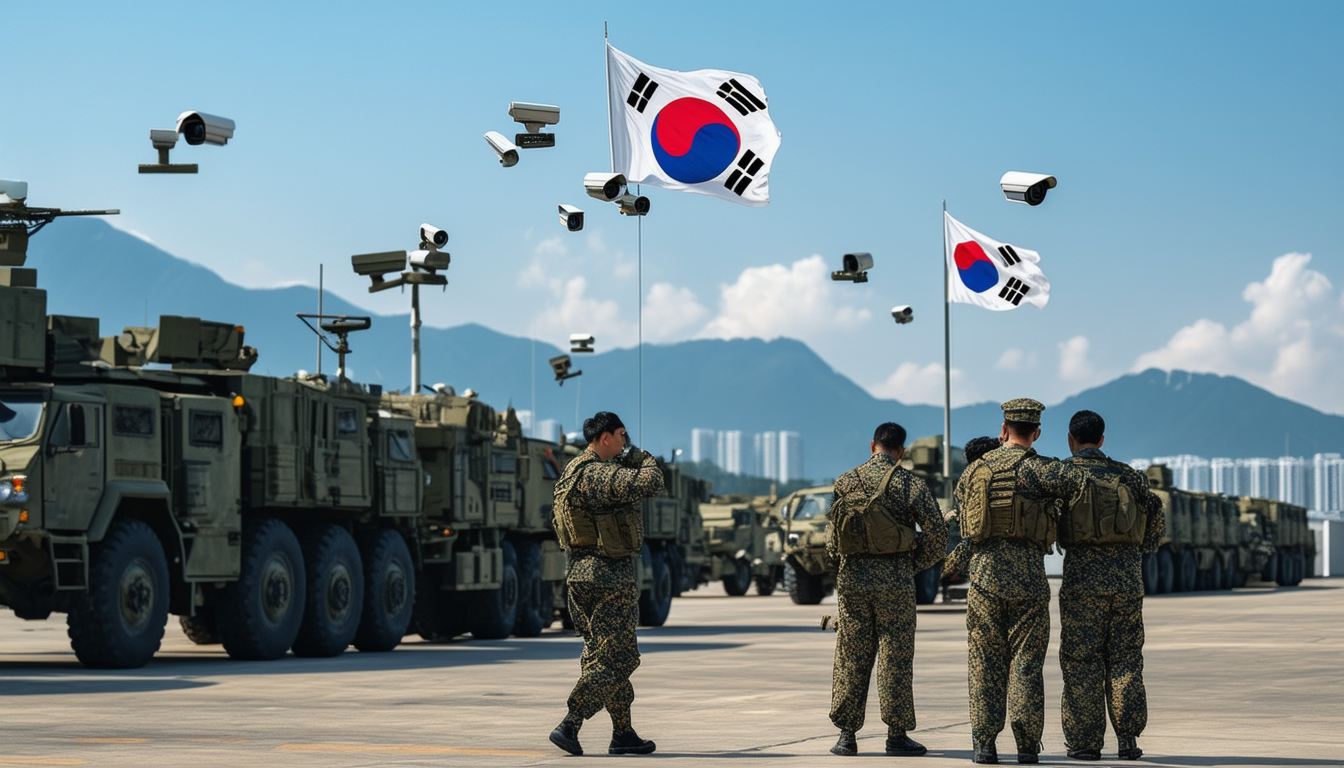Faced with growing concern about national security, South Korea made a significant decision by withdrawing the surveillance cameras made in China of its military arsenal. This initiative is part of a tense international context, marked by rivalry between UNITED STATES and the China, as well as the security issues linked to nuclear programs of the North Korea. Growing distrust of Chinese-origin technologies has deepened, prompting governments to review their surveillance policies and strengthen protection measures. Consequently, this decision highlights the importance of ensuring reliable security and avoid vulnerability risks through potentially compromised systems.

Amid growing distrust of Chinese-origin surveillance technology, South Korea recently made the decision to remove Chinese-made CCTV cameras from its military arsenal. This initiative aims to strengthen national security in the face of evolving geopolitical tensions in the region, particularly in relation to North Korea and the resulting nuclear threats.
Table des matières
ToggleGrowing security concerns
South Korea’s decision is not made in a vacuum. The security landscape on the Korean Peninsula is marked by persistent challenges, including the North Korea’s nuclear development and tensions with its neighbors. Faced with these challenges, the perception of a threat emanating from the use of Chinese surveillance technology led to this new policy. The main objective is to increase the security of military installations and sensitive infrastructure.
Banning of Chinese manufacturers
Beyond the cameras, distrust of Chinese equipment has gained ground among other governments, as evidenced by the company’s recent ban Hikvision by the government of Quebec. Securing state surveillance systems has become a crucial priority, in response to concerns over data privacy and cyber security, amplified by the China-US rivalry.
The military implications of this decision
The removal of Chinese surveillance cameras is not simply a matter of technology; it is also a military strategy. By sending a strong signal about South Korea’s desire to protect its vital infrastructure, the move aims to ensure that potential spies do not have access to sensitive information. More so, the country is preparing to use local alternatives to maintain its operational efficiency without compromising its security.
An evolving technological landscape
This decision is part of a broader shift towards national capacity building. South Korea, known for its technological advancements, emphasizes the development and integration of locally manufactured security systems. This could not only reduce dependence on foreign technology but also foster innovation in the defense sector.
Towards increased technological sovereignty
The decision to remove Chinese cameras could also be seen as a step towards increased technological sovereignty. By investing in domestic surveillance solutions, South Korea aspires to create an environment where national security is not just about hardware, but about control and data protection. As the region faces potential dangers, it is imperative for governments to equip themselves with the tools necessary to ensure their defense.
Les meilleures caméras de surveillance pour l'intérieur et l'extérieur en 2024 https://t.co/6lKSDJdLoO
— nextpit France (@NextPitFR) July 10, 2024

























